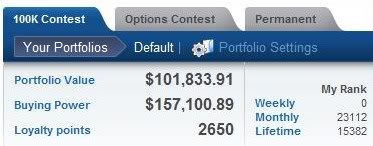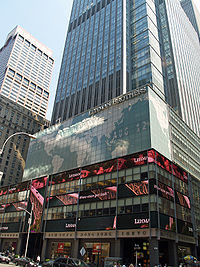From: Stock Market Investing For Dummies
All too often, stock market investing is made to seem more complicated than it is. We have called this site Stock Market Investing for Dummies because when we first set out on a journey we have so much learning and understanding to do. Please don’t feel slighted by the term; it is intended to inject a little light-heartedness into the proceedings.
The basic concept of investing in the stock market revolves around the stock itself. A share of stock is a part of ownership in a particular company. When a company “Goes Public” they are making part of their shares of stock available on a major stock exchange, where you can purchase and sell those shares of stock.
Everyone has heard of the concept of buying low and selling high, and in reality the fundamentals behind the principal are not all that hard to understand either. A stock’s value is dependant upon its demand. When the value is low, there is very little demand for the stock. If the company then releases a dividend, or unveils new business plans, this can get other investor’s attention and increases its demand or value.
To make the most amount of money, you have to know when a particular share will be more in demand before the other investors do and that in itself is an advanced technique you will begin to understand as you gain more experience. Buy low and sell high, but in order to make the best profit, you need to buy low before the other investors do and sell high right before the demand fades away. Too late and you lose money, to early and you also lose money. Give it time and practice and soon you will be trading like a professional.
When it comes to stock market investing for dummies, all that you really need to know is that you want to purchase a share of stock when there is little or no demand. However this is tricky because you want to make the purchase with an anticipation of the increase in demand for a stock.
Stock Market For Dummies – Update
In today’s economic climate it is even more important that your research is as thorough as it possibly can be. Scout around this site before you invest in any equity related instruments – click on links and read as much as you possibly can. Don’t get caught out through lack of knowledge.
Many people see all the stock market investment software that is available on the internet and are wondering if it actually works. The answer to this one is a bit difficult to explain because there are some pros and cons that must be taken into account.
For starters, these programs analyze the ticker for the data. With the thousands of stocks out there to choose from, the ability to monitor them all on a continuous basis is difficult for a human, but not for a computer program. When they see certain patterns occur to a particular stock, they let alert you to the fact.
The goal is to purchase when the program tells you to because the value is increasing. However, this can also be misleading because if a share of stock jumps abruptly and tops out, you may be purchasing the stock at too high a level.
Furthermore, these programs also attempt to determine when you should sell; however sometimes this alert can come too early or even too late causing you to lose money.
Using your own common sense is very important. You need to keep an eye on business news while at the same time pay attention to what the program is telling you. If the program is telling you to buy, and your common sense is telling you not to based on the actual news you are hearing, then simply do not buy.
The only way for you to truly make money is through the development of your very own trading strategy which focuses on your strengths. When you first start to invest, a stock market investing software package can help you to build up the experience needed to start developing your own investment strategy, to the point that you will no longer need the Stock Market Investing For Dummies Guide.
Update
Given the turbulent times we have experienced of late, it is the opinion of The Stock Market For Dummies Guide that automated stock investment software is too volatile in today’s market to be of any benefit to the beginner investor. These times will present some fantastic opportunities for the shrewd investor, but any decisions should be made without the aid of automated software.
All too often, stock market investing is made to seem more complicated than it is. We have called this site Stock Market Investing for Dummies because when we first set out on a journey we have so much learning and understanding to do. Please don’t feel slighted by the term; it is intended to inject a little light-heartedness into the proceedings.
The basic concept of investing in the stock market revolves around the stock itself. A share of stock is a part of ownership in a particular company. When a company “Goes Public” they are making part of their shares of stock available on a major stock exchange, where you can purchase and sell those shares of stock.
Everyone has heard of the concept of buying low and selling high, and in reality the fundamentals behind the principal are not all that hard to understand either. A stock’s value is dependant upon its demand. When the value is low, there is very little demand for the stock. If the company then releases a dividend, or unveils new business plans, this can get other investor’s attention and increases its demand or value.
To make the most amount of money, you have to know when a particular share will be more in demand before the other investors do and that in itself is an advanced technique you will begin to understand as you gain more experience. Buy low and sell high, but in order to make the best profit, you need to buy low before the other investors do and sell high right before the demand fades away. Too late and you lose money, to early and you also lose money. Give it time and practice and soon you will be trading like a professional.
When it comes to stock market investing for dummies, all that you really need to know is that you want to purchase a share of stock when there is little or no demand. However this is tricky because you want to make the purchase with an anticipation of the increase in demand for a stock.
Stock Market For Dummies – Update
In today’s economic climate it is even more important that your research is as thorough as it possibly can be. Scout around this site before you invest in any equity related instruments – click on links and read as much as you possibly can. Don’t get caught out through lack of knowledge.
Many people see all the stock market investment software that is available on the internet and are wondering if it actually works. The answer to this one is a bit difficult to explain because there are some pros and cons that must be taken into account.
For starters, these programs analyze the ticker for the data. With the thousands of stocks out there to choose from, the ability to monitor them all on a continuous basis is difficult for a human, but not for a computer program. When they see certain patterns occur to a particular stock, they let alert you to the fact.
The goal is to purchase when the program tells you to because the value is increasing. However, this can also be misleading because if a share of stock jumps abruptly and tops out, you may be purchasing the stock at too high a level.
Furthermore, these programs also attempt to determine when you should sell; however sometimes this alert can come too early or even too late causing you to lose money.
Using your own common sense is very important. You need to keep an eye on business news while at the same time pay attention to what the program is telling you. If the program is telling you to buy, and your common sense is telling you not to based on the actual news you are hearing, then simply do not buy.
The only way for you to truly make money is through the development of your very own trading strategy which focuses on your strengths. When you first start to invest, a stock market investing software package can help you to build up the experience needed to start developing your own investment strategy, to the point that you will no longer need the Stock Market Investing For Dummies Guide.
Update
Given the turbulent times we have experienced of late, it is the opinion of The Stock Market For Dummies Guide that automated stock investment software is too volatile in today’s market to be of any benefit to the beginner investor. These times will present some fantastic opportunities for the shrewd investor, but any decisions should be made without the aid of automated software.



















